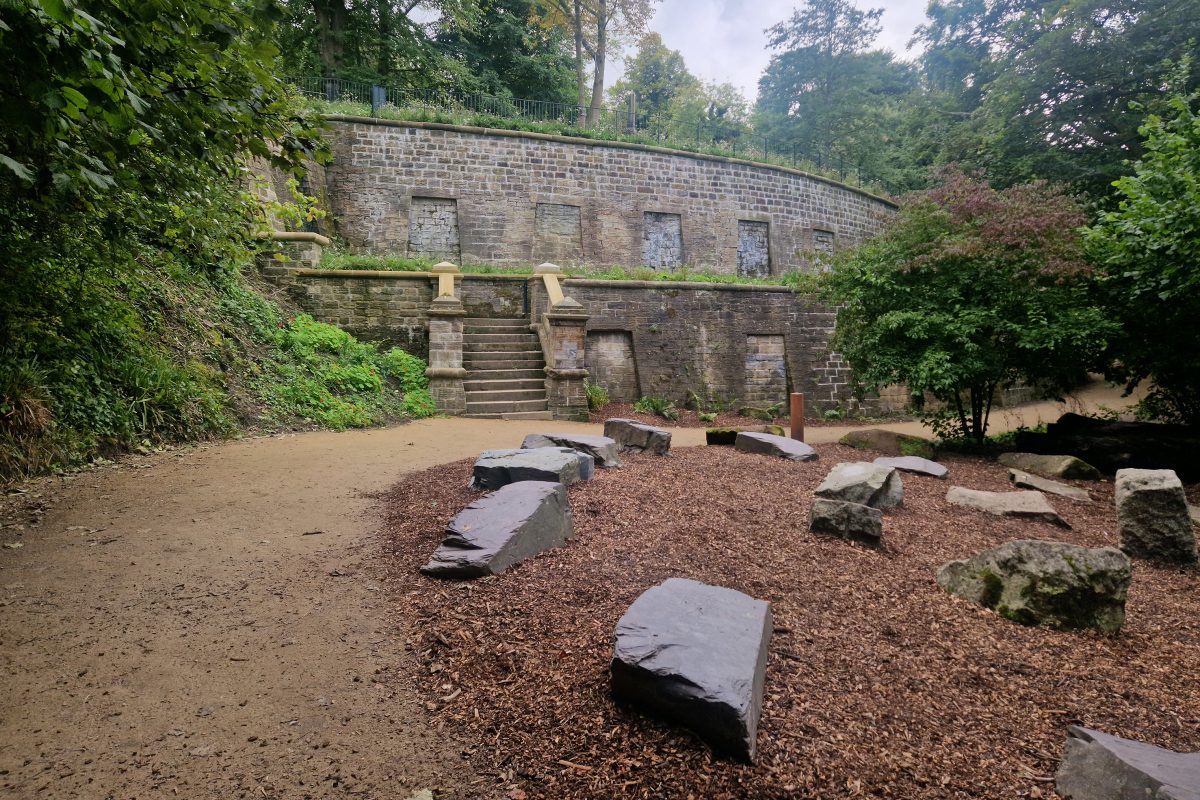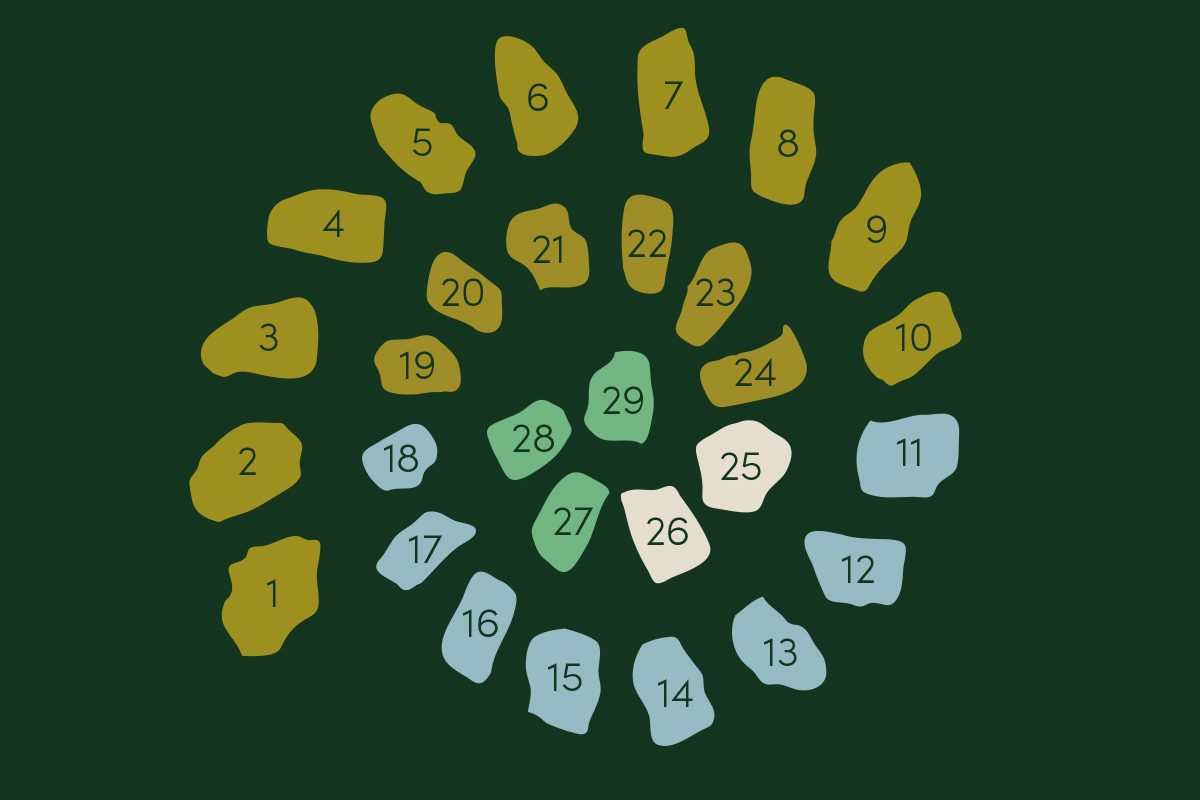The main rock types used in Sheffield General Cemetery are represented at the Geological Stone Spiral and outside the Gatehouse. The Stone Spiral was designed by Adrian Hallam, and the majority of the stone blocks were donated by quarry companies in 2004.
In Sheffield General Cemetery’s early days, its buildings and headstones mostly used locally quarried sandstones and gritstones. After the coming of the railways in 1840, stone could be brought from afar. There were igneous granites from Scotland, Cornwall and Scandinavia, and metamorphic marble from Italy. Since the Cemetery closed in the 1970s, rocks for monuments elsewhere have mostly come from India, China and South America.

Groundwork
Graves may be “six feet down”, but what underlies them? The geology of the Cemetery consists of rocks of Carboniferous Coal Measures age, tilted towards the north east by Earth movements. Coal Measures strata consist of sandstones, mudstones and coal seams, and rather poor-quality sandstone was quarried within the Cemetery grounds for wall building. High quality “Brincliffe Blue” sandstone for gravestones was quarried less than a mile away.
To find out more about the geology of Sheffield and its region visit the “What on Earth?” gallery at Weston Park Museum, or see the Sheffield Area Geology Trust’s website.
Rock Groups in the Stone Spiral
Sedimentary rocks: sandstones (1-10 and 19-24). Formed by deposition of eroded fragments of older rocks. Some have good sedimentary structures, and one has fossil plant impressions: limestones (25-26). Formed from the dead remains of sea creatures. Look for crinoid fossils in 26.
Metamorphic rocks (11-18): slate formed by intense lateral pressure acting on sea-bed mudstones.
Igneous rocks (27-29): grey, pink and white granites formed from molten rock intruded into the Earth’s crust.




